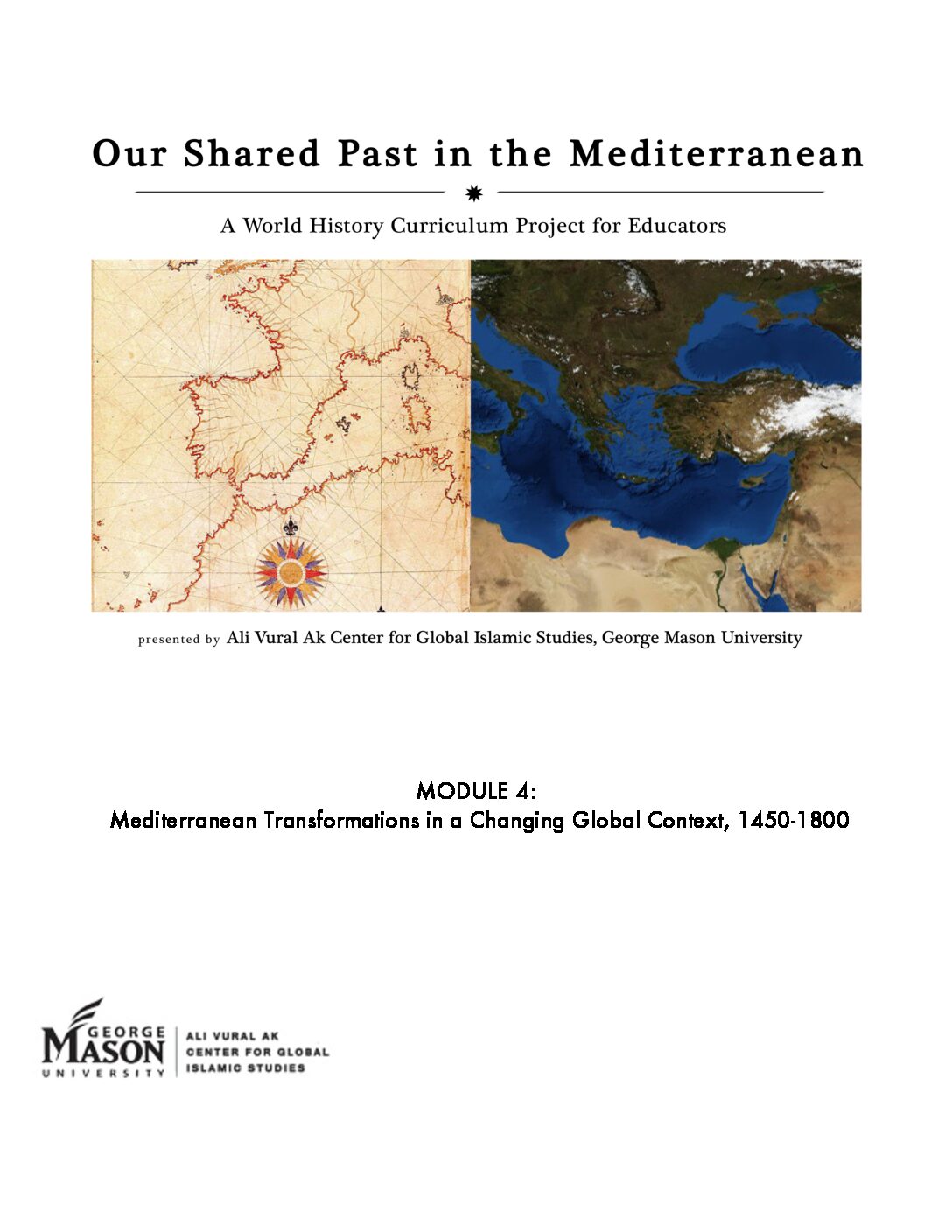Module 4: Mediterranean Transformations in a Changing Global Context, 1450-1800
Description
This period in history sees the expansion of European states into the Indian Ocean and across the Atlantic to the New World, and these enormous changes have tended to make many assume that the Mediterranean became, quite literally, a backwater. The Mediterranean has also been seen as the dividing line between East and West, across which Muslim and Christian civilizations struggled for dominance. The topics in Module 4, which covers the early modern period from 1450-1800, reveal a more complex reality. While Europeans were sailing around Africa and discovering the New World, the Mediterranean actually remained an important locus of trade, politics, and culture. And while there was certainly conflict between Muslims and Christians, there were also alliances across religious lines and a whole lot of division and fighting within each of those broad faith groups. In this module, students will trace a variety of connections and tensions across the societies of the Mediterranean. Students will create their own attack ads as they debate the ideas of golden age and decline with reference to Hapsburg Spain and the Ottoman Empire, and map a number of Mediterranean movers and shakers as they criss-cross the region for trade, pilgrimage, war, and exploration. They will look at Mediterranean economies as they create, trade and consume commodities like sugar, coffee and silk—as well as enslaved human beings. They will also look at a cosmopolitan Mediterranean city through time, and examine the various peoples that made the city of Salonica tick.Table of Contents
TEACHERS’ INTRODUCTION TO MODULE 4
MODULE 4 LESSONS.
- TOPIC 1: BEYOND GOLDEN AGE AND DECLINE
- Lesson 4.1: Beyond Golden Age and Decline
- TOPIC 2: EXPANSION, EXPLORATION AND EXPLOITATION: POPULATION MOVEMENTS IN THE AGE OF EMPIRES
- Lesson 4.2: Mapping Imperial Contexts
- Lesson 4.3: Comparison of Historical Maps
- Lesson 4.4: Mapping Mediterranean Movers and Shakers
- TOPIC 3: NETWORKS OF TRADE, TECHNOLOGY AND TASTE: SUGAR, COFFEE AND SILK
- Lesson 4.5: Bittersweet: The Sugar Trade and Its Effects
- Lesson 4.6: Coffee, Coffeehouses, and Controversy
- Lesson 4.7: Conspicuous Consumption and Competitive Trade: The Story of Silk
- TOPIC 4: COSMOPOLITAN PORT CITIES ON THE MEDITERRANEAN
- Lesson 4.8: Salonica, Cosmopolitan Port City
- TOPIC 6: SLAVERY IN MEDITERRANEAN CONTEXTS
- Lesson 4.9: Slavery in the Mediterranean
MODULE 4 BIBLIOGRAPHY
STUDENT HANDOUTS BY LESSON #

